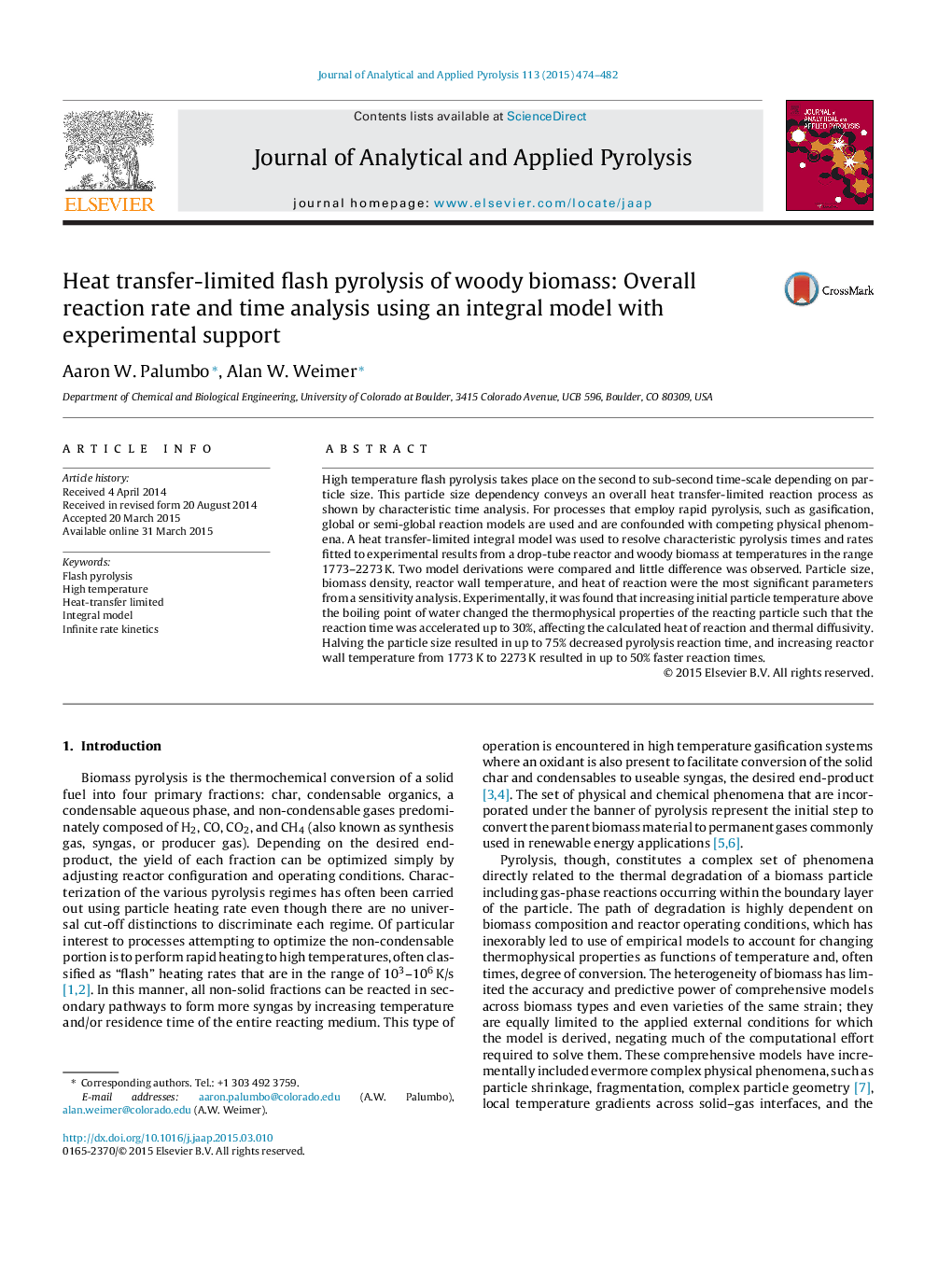| Article ID | Journal | Published Year | Pages | File Type |
|---|---|---|---|---|
| 7606801 | Journal of Analytical and Applied Pyrolysis | 2015 | 9 Pages |
Abstract
High temperature flash pyrolysis takes place on the second to sub-second time-scale depending on particle size. This particle size dependency conveys an overall heat transfer-limited reaction process as shown by characteristic time analysis. For processes that employ rapid pyrolysis, such as gasification, global or semi-global reaction models are used and are confounded with competing physical phenomena. A heat transfer-limited integral model was used to resolve characteristic pyrolysis times and rates fitted to experimental results from a drop-tube reactor and woody biomass at temperatures in the range 1773-2273Â K. Two model derivations were compared and little difference was observed. Particle size, biomass density, reactor wall temperature, and heat of reaction were the most significant parameters from a sensitivity analysis. Experimentally, it was found that increasing initial particle temperature above the boiling point of water changed the thermophysical properties of the reacting particle such that the reaction time was accelerated up to 30%, affecting the calculated heat of reaction and thermal diffusivity. Halving the particle size resulted in up to 75% decreased pyrolysis reaction time, and increasing reactor wall temperature from 1773Â K to 2273Â K resulted in up to 50% faster reaction times.
Related Topics
Physical Sciences and Engineering
Chemistry
Analytical Chemistry
Authors
Aaron W. Palumbo, Alan W. Weimer,
